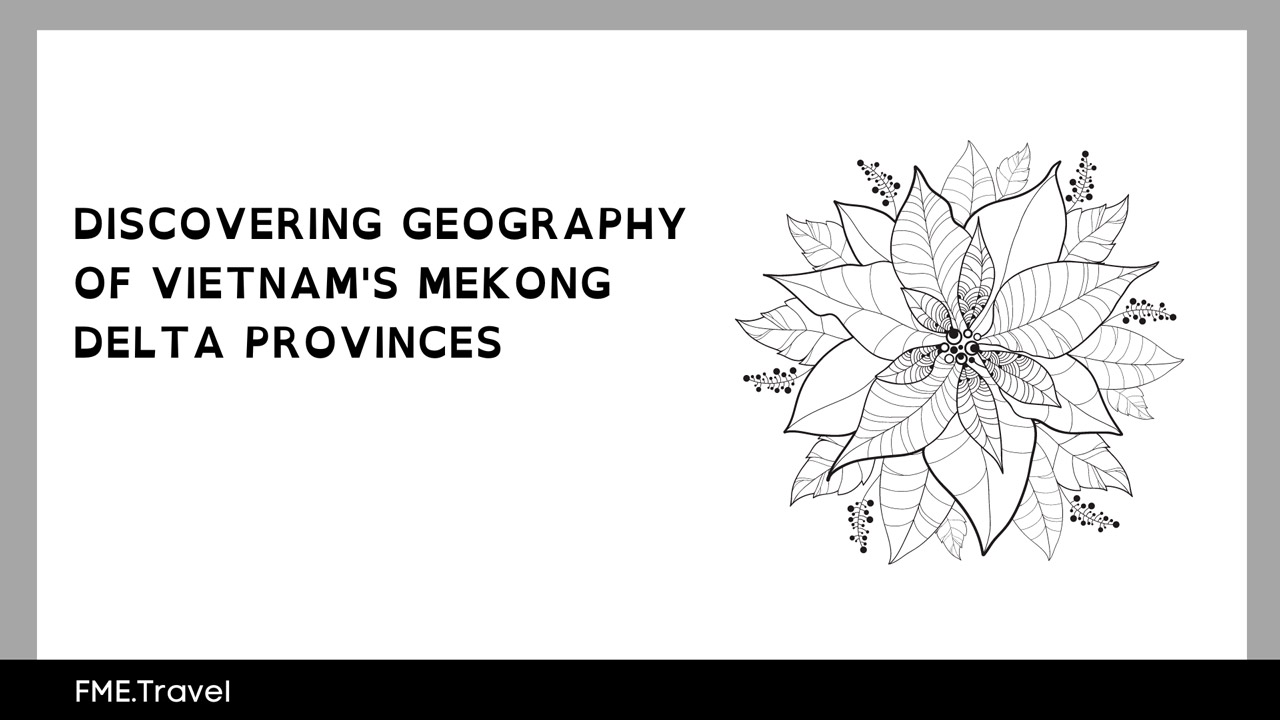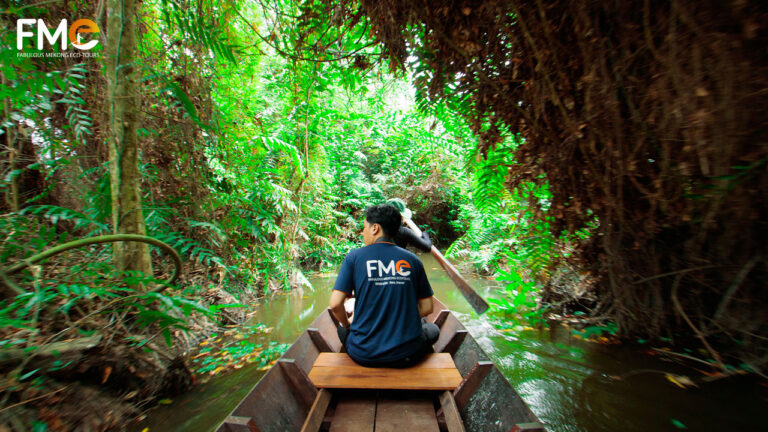
Dong Thap
Dong Thap is a province located in the Mekong Delta region of Vietnam. It covers an area of 3,376.3 square kilometers and is home to a population of over 1.7 million people. The province is bordered by Can Tho city to the southeast, An Giang province to the west, and Long An province to the north.
Dong Thap is known for its diverse ecosystem, with a combination of rivers, canals, rice fields, and natural habitats that create a unique and beautiful landscape. The province is also famous for its abundant lotus flowers, which bloom throughout the year and can be found in many ponds and lakes across the region. Visitors to Dong Thap can enjoy a peaceful boat ride along the canals and admire the beautiful scenery, especially during the lotus season from July to October.
Join FME to discover the journey of Dong Thap:
Dong Thap is home to the Tram Chim National Park, which is one of the last sanctuaries in the world for the endangered red-headed crane. The park is also a habitat for many other rare and endangered bird species, such as the white-winged duck and the Bengal florican.
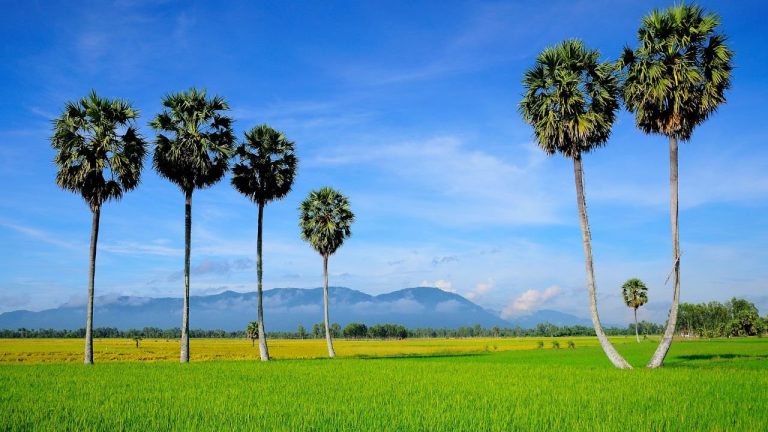
An Giang
An Giang is a province located in the southwestern region of Vietnam, bordering Cambodia. It covers an area of 3,536.7 square kilometers and is home to a population of over 2.3 million people. The province is known for its diverse landscape, with mountains, rivers, canals, and rice fields creating a unique and stunning scenery.
One of the most famous landmarks in An Giang is the Sam Mountain, which is considered the highest mountain in the Mekong Delta region. Visitors can hike up to the top of the mountain to enjoy a panoramic view of the surrounding countryside and take in the beauty of the Chau Doc River. Another popular attraction in An Giang is the Tra Su Cajuput Forest, which is a vast wetland forest with an area of over 800 hectares. Visitors can take a boat ride through the forest to see the diverse wildlife, including birds, bats, and fish, as well as the stunning greenery of the cajuput trees.
The province is also known for its silk production, which has a long and rich history in the region. An Giang’s silk is renowned for its quality and beauty, and it is often used to make traditional Vietnamese clothing such as the “ao dai”. Visitors can visit local silk factories and learn about the process of silk production, from raising silkworms to weaving and dyeing the fabric. They can also purchase handmade silk products, such as scarves and clothing, as souvenirs of their visit.
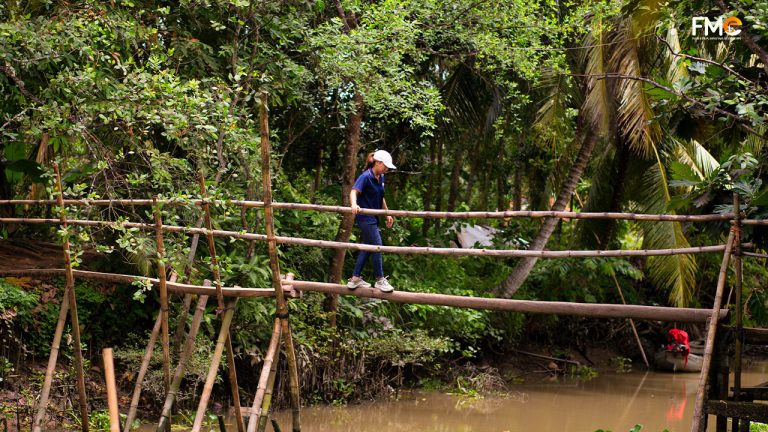
Can Tho
Can Tho is a centrally governed city in the Mekong Delta region of Vietnam. It is the fifth largest city in Vietnam, with a population of over 1.2 million people. Can Tho is known for its intricate system of waterways, which include the Hau River, Can Tho River, and many smaller canals. The city is also an important economic hub, with a thriving agricultural sector that produces rice, fruit, and vegetables.
Experience local community tour:
One fun fact about Can Tho is that it is home to the Cai Rang Floating Market, which is the largest floating market in the Mekong Delta. The market is a lively and colorful scene, with vendors selling a wide variety of goods, from fresh fruits and vegetables to handicrafts and clothing. Visitors can take a boat tour of the market and observe the hustle and bustle of daily life on the waterways. It’s an unforgettable experience and a great way to immerse oneself in the local culture.
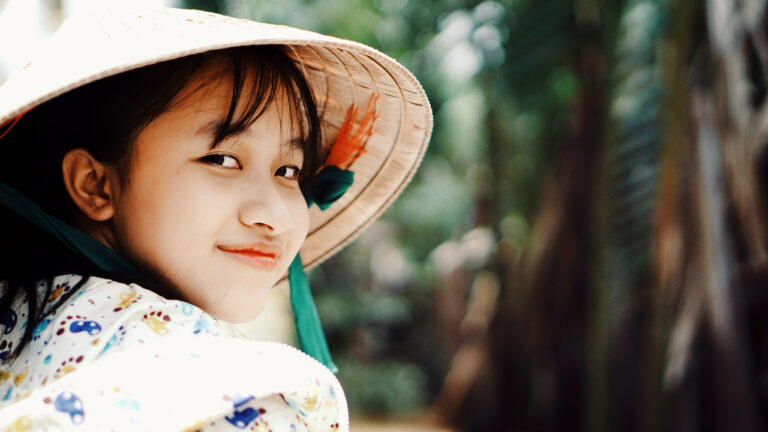
Ben Tre
Ben Tre is a province in the Mekong Delta region of Vietnam, located to the east of the Tien River. The province has a population of over 1.4 million people and covers an area of 2,360 square kilometers. It is known for its abundant coconut trees, which provide a major source of income for the local economy.
In addition to its coconut production, Ben Tre is also known for its scenic beauty and rich cultural heritage. Visitors can explore the province’s many rivers and canals by boat, taking in the lush greenery and charming villages along the way. Ben Tre is also home to several historic pagodas and temples, including the famous Vinh Trang Pagoda, which dates back to the 19th century and features a mix of Vietnamese, Chinese, and Khmer architectural styles.
One fun fact about Ben Tre is that it is often referred to as the “land of coconuts.” The province has over 60,000 hectares of coconut trees, which produce around 500 million coconuts each year. Coconut products are a major export for Ben Tre, and visitors can try a wide variety of coconut-based dishes and drinks while exploring the area.
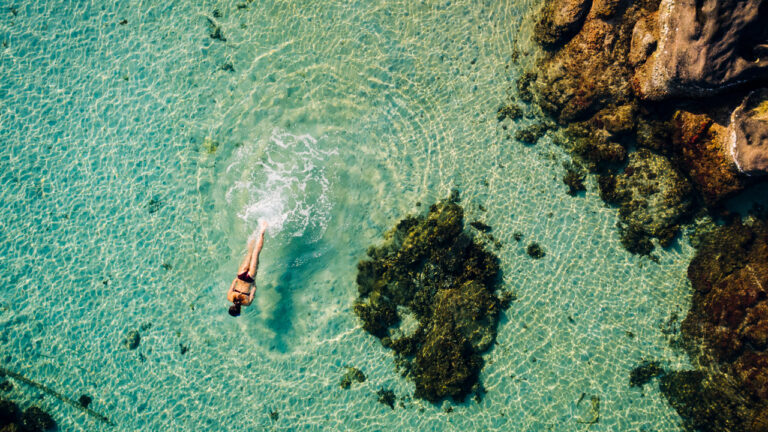
Kien Giang
Kien Giang is a coastal province located in the southwestern part of Vietnam, bordering Cambodia to the west. It covers an area of 6,299 square kilometers and has a population of over 1.7 million people. The province is known for its stunning beaches, diverse wildlife, and vibrant cultural heritage.
One of the most popular attractions in Kien Giang is Phu Quoc Island, a tropical paradise that attracts visitors from all over the world. The island boasts pristine white sand beaches, crystal-clear waters, and lush forests teeming with exotic wildlife. Visitors can also explore the island’s many cultural and historical landmarks, including ancient temples and traditional fishing villages.
A fun fact about Kien Giang is that it is home to the largest temple complex in the Mekong Delta region. The Nguyen Trung Truc Temple Complex, located in Rach Gia City, features over 20 different temples and shrines dedicated to various deities and historical figures. The complex is a popular destination for both tourists and local residents alike, and is an important cultural and religious center for the region.

Bac Lieu
Bac Lieu is a province located in the southernmost part of Vietnam, bordered by the Gulf of Thailand to the west. It covers an area of 2,528 square kilometers and has a population of over 900,000 people. The province is known for its unique cultural heritage, including its famous folk music and traditional architecture.
One of the most popular attractions in Bac Lieu is the Bac Lieu Bird Sanctuary, a protected wetland area that is home to over 40 different species of birds. Visitors can explore the sanctuary by boat or on foot, and can observe rare and endangered species such as the sarus crane and the painted stork.
Bac Lieu is also home to several historic landmarks, including the Bac Lieu Mansion, a sprawling French colonial-style villa that was once the residence of a wealthy merchant. The mansion is now open to the public as a museum, showcasing the history and culture of the region.
A fun fact about Bac Lieu is that it is the birthplace of one of Vietnam’s most famous musicians, Cao Van Lau. Lau is credited with popularizing the traditional folk music of the region, and his songs are still beloved by many Vietnamese today. The province holds an annual music festival in his honor, drawing crowds of visitors from all over the country.
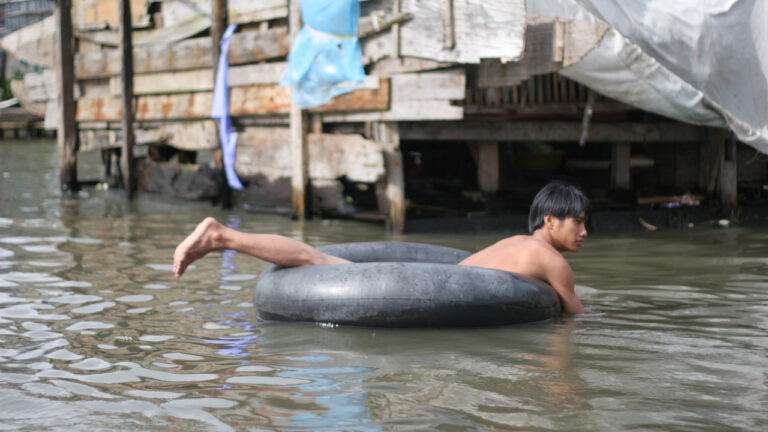
Ca Mau
Ca Mau is a coastal province located in the southernmost part of Vietnam, with a total area of 5,331 square kilometers and a population of over 1.2 million people. The province is famous for its unique ecosystem, which includes mangrove forests, swamps, and marshes, making it an ideal destination for ecotourism.
One of the most popular attractions in Ca Mau is the Ca Mau Cape National Park, which covers an area of over 43,000 hectares and is home to over 90 species of birds, many of which are endangered. Visitors can explore the park by boat or on foot, and can observe the diverse wildlife, including monkeys, otters, and crocodiles.
Another popular destination in Ca Mau is the U Minh Ha National Park, a vast wetland area that is home to over 250 species of birds, as well as rare mammals such as the clouded leopard and the sun bear. Visitors can explore the park on foot or by boat, and can observe the unique ecosystem of the region.
A fun fact about Ca Mau is that it is home to the southernmost point of mainland Vietnam, known as Ca Mau Cape. The cape is located at the end of a long, narrow peninsula that juts out into the Gulf of Thailand, and is a popular spot for watching the sunrise or sunset.
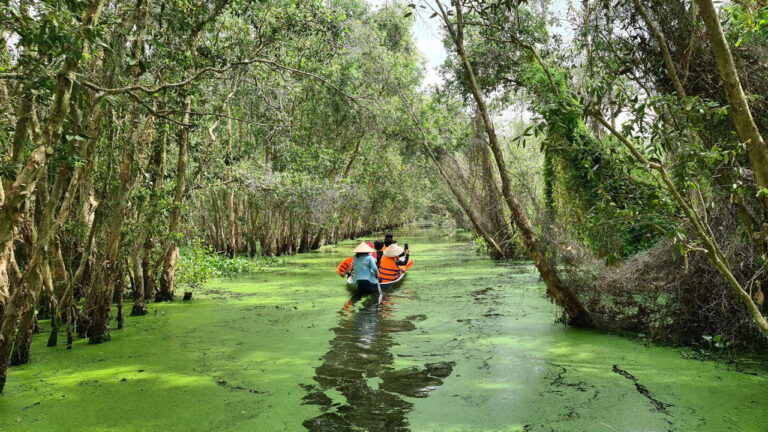
Long An
Long An is a province in the Mekong Delta region of Vietnam, located on the border with Cambodia. The province covers an area of 4,495 square kilometers and has a population of approximately 1.6 million people.
The main rivers in Long An are the Vam Co Dong and the Vam Co Tay, which are important for transportation and agriculture. The province is known for its fertile land and produces a variety of crops, including rice, sugarcane, and fruit such as mango and dragon fruit.
One of the most popular tourist attractions in Long An is the Tan Lap floating village, which offers visitors the opportunity to explore the unique ecosystem of the wetland forests. Another interesting place to visit is the Lang Ong – Ba Chieu temple complex, which is a historical and cultural relic and has been recognized as a national-level historical and cultural monument.
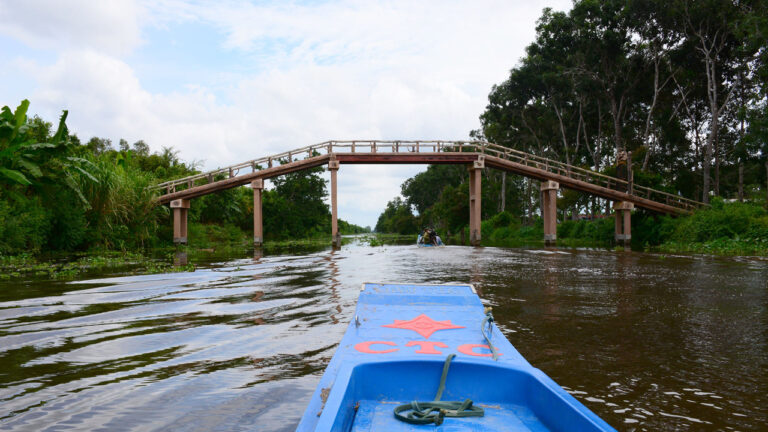
Hau Giang
Hau Giang is a province in the Mekong Delta region of Vietnam, located in the southwest of the country. It has a total area of 1,609.3 square kilometers and a population of over 800,000 people. The province is named after the Hau River, which flows through it and is one of the major tributaries of the Mekong River.

Soc Trang
Soc Trang is a province located in the Mekong Delta region of Vietnam. It is known for its rich cultural diversity with Khmer, Chinese, and Vietnamese communities living together harmoniously. Soc Trang has many beautiful temples and pagodas, such as the Khmer-style Bat Pagoda and the Clay Pagoda.
The city is home to the Kh’leang Pagoda, a Khmer-style temple that dates back to the 16th century and is known for its beautiful architecture and intricate carvings.
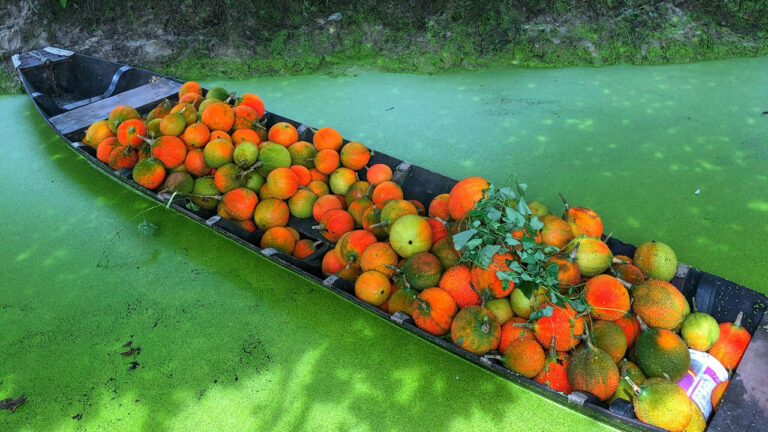
Tien Giang
Tien Giang is a province in the Mekong Delta region of southern Vietnam, with its capital city located in My Tho. The province is bordered by other Mekong Delta provinces including Long An to the north, Ben Tre to the east, and Vinh Long to the west. The southern border of Tien Giang faces the South China Sea.
Tien Giang is known for its abundant fruit orchards, with popular fruits including durian, rambutan, and mangosteen. The province is also famous for its traditional handcraft villages, such as Tan Phong and Tan Thanh pottery villages, which produce high-quality ceramic products.
Tien Giang is the largest total area of fruit orchards in the Mekong Delta region, with a total area of over 76,000 hectares.
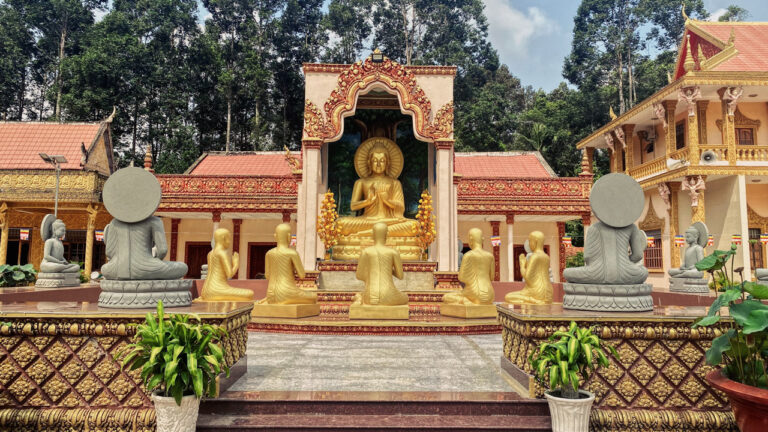
Tra Vinh
Tra Vinh is a province located in the Mekong Delta region of southern Vietnam. It is bordered by Ben Tre to the east, Soc Trang to the south, Vinh Long to the west, and the East Sea to the north. The province has a total area of 2,295 square kilometers and a population of over 1.1 million people.
Tra Vinh is known for its rich cultural heritage, with a majority of the population being of Khmer ethnicity. The province is home to many historical Khmer temples and pagodas, such as the Ang Pagoda and the Ba Om Pond, which are popular tourist destinations.
Tra Vinh is famous for its coconut candies, which are made from fresh coconut milk and have a deliciously sweet taste. These candies are a popular souvenir for visitors to the province.
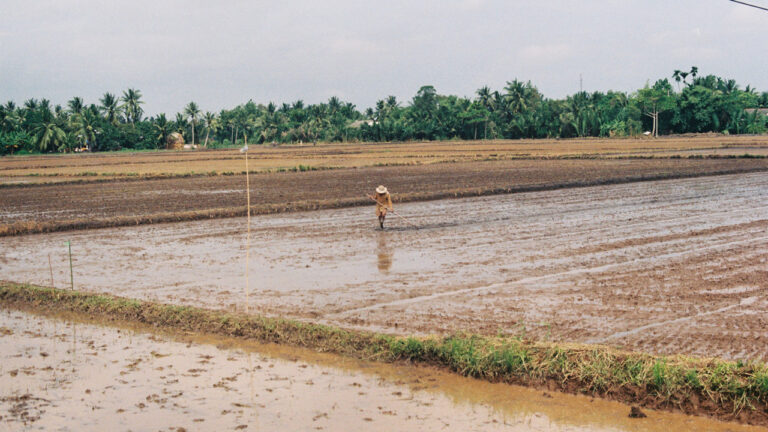
Vinh Long
Vinh Long is a province located in the Mekong Delta region of southern Vietnam. It covers an area of approximately 1,479 square kilometers and has a population of over 1 million people.
The province is known for its abundant fruit orchards, particularly those that grow pomelos, longans, and oranges. It is also home to many traditional crafts, such as weaving and pottery, and has a rich history and culture.

